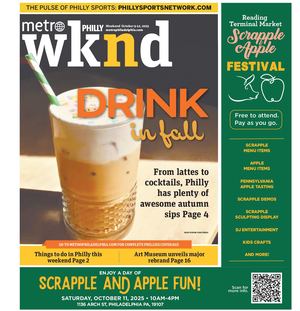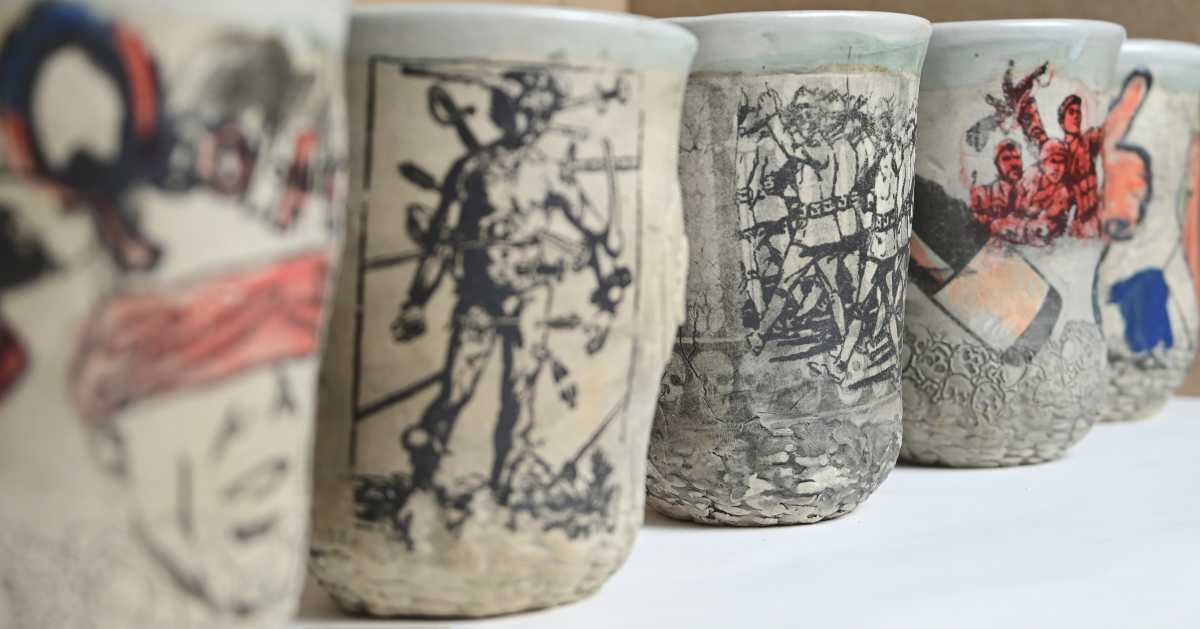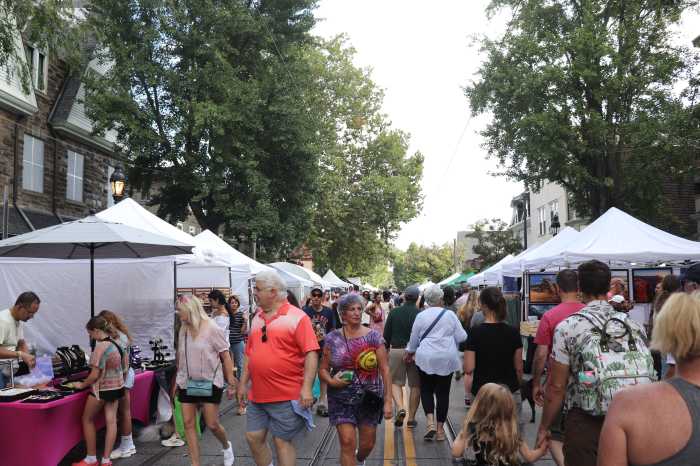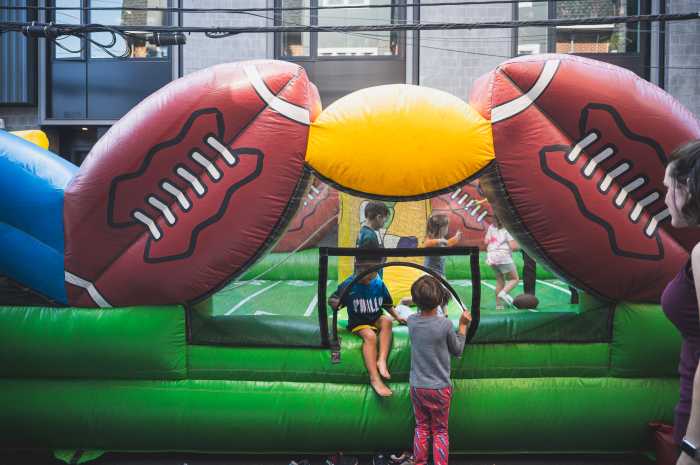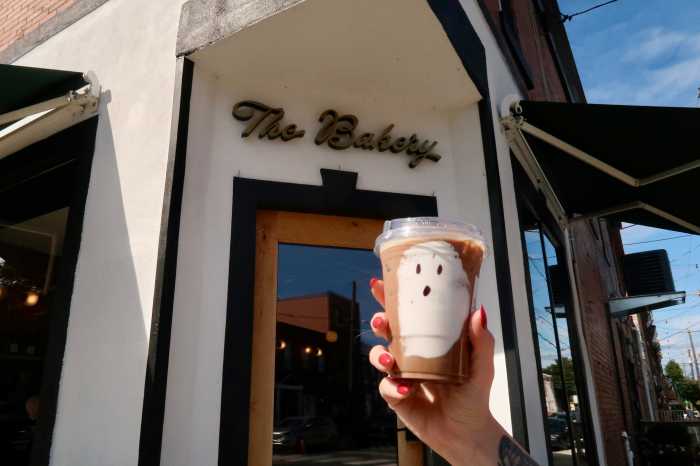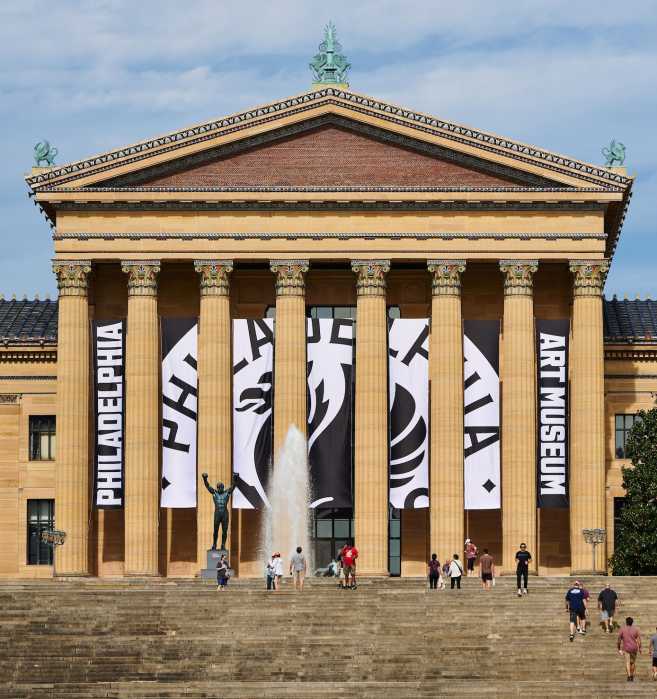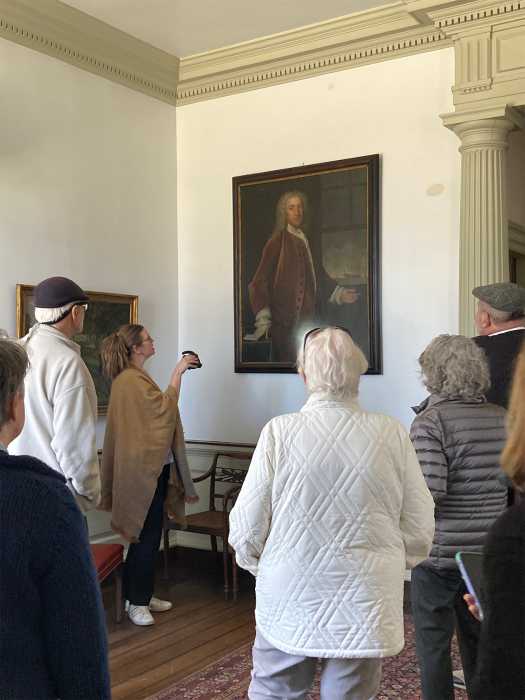Next month, The Clay Studio: Center for Innovation in Ceramic Art will debut Clay as Care, a groundbreaking project that explores the ways art and ceramics promote self-care, healing, rest, and wellness. From Oct. 9 to Dec. 31, the gallery will transform into an immersive space where visitors are invited to relax, view and create art, and discover the restorative power of clay through new works by four acclaimed artists.
Clay as Care is co-curated by The Clay Studio’s Director of Artistic Programming Jennifer Zwilling, and curator, artist, and designer Nicole Pollard. Along with the artwork, guests can also experience Pollard’s custom-designed rest area. Collaborations with researchers from Penn, Jefferson, and Drexel will study how the environment impacts visitor wellness. Also, a symposium on Oct. 25 with keynote speaker Tricia Hersey (founder of The Nap Ministry) plus November’s first-ever Care Fest will extend the conversations beyond the gallery.
Below, Zwilling shares with Metro what inspired Clay as Care, how each artist uses clay in their works, and what she hopes visitors take away from the experience.
Can you provide an overview of Clay as Care? What prompted The Clay Studio to present this type of exhibition?
We have been thinking for a long time about how many people who work with clay talk about the material and processes around it as meditative and soothing. It is something that many in the ceramic art field feel at a gut level. When you touch clay, you’re touching earth, and it inherently feels grounding. The motions of kneading, shaping, and throwing on the wheel are repetitive and meditative, adding to a sense of focus.
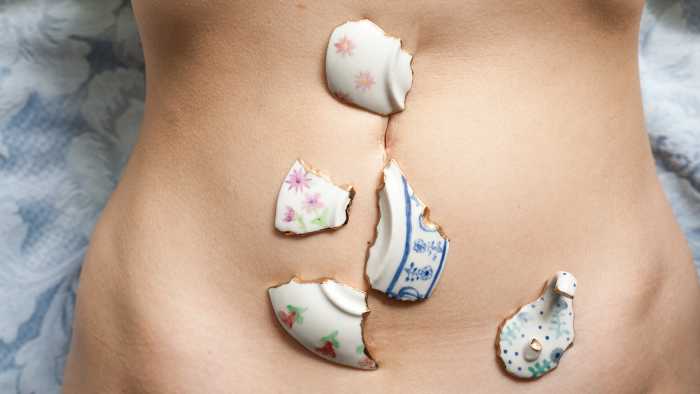
Many artists over the years have written about these ideas, and we see it every day among the many artists and students who make ceramic art at The Clay Studio. We wanted to create an exhibition that would highlight artists for whom the healing aspects of clay are integral to their practice, and at the same time, create a viewing environment that would foster a care-centered experience for the visitors to the gallery.
As co-curator, how did you decide which artists would best help visitors connect with the exhibition’s focus on rest, wellness, and care?
There are lots of artists who choose to make art with clay because they feel a connection to its qualities of healing and the ways it can benefit mental health. We wanted to highlight four artists who approach clay and ideas of healing in diverse ways.
Jennifer Ling Datchuk uses her ceramic practice to create sculptures and installations that bring to light her long medical journey through fertility treatments.
Adebunmi Gbadebo uses clay harvested from the site of the plantation where her ancestors were enslaved. She sees the soil as containing their blood, sweat, and tears. Therefore, their DNA is contained in the vessels she builds to honor and heal them, and herself from the trauma they endured.
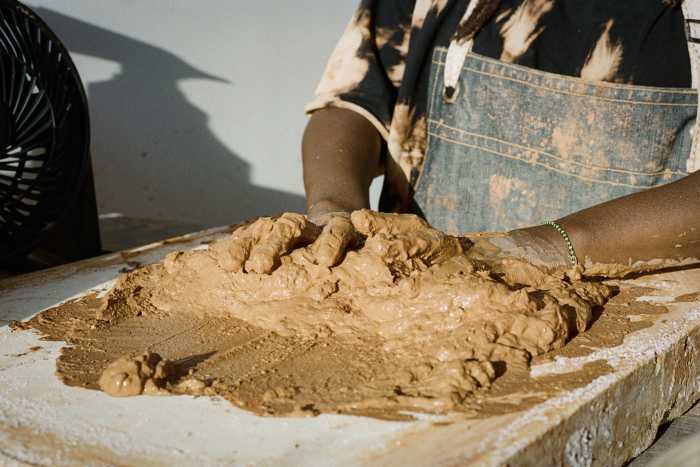
Ehren Tool focuses on how the physical practice of throwing cups supports his mental health and healing from the trauma around his military experience. The bunker he will build of cups speaks to the protection from the violence of war.
Maia Chao is creating a film looking at clay practices from the perspective of someone who is not a ceramic artist. It will guide the visitor through the physical motions of working with clay to give each of them a sense of that meditative quality inherent in the ceramic art installed in the gallery.
The four artists come from very different backgrounds. What common thread do you see running through their works in relation to care?
Each of the four artists has a very personal story to tell through their art. The pieces they’ve made for the exhibition look very different from each other. Clay is extremely malleable both physically and conceptually. It can be made into a vast area of shapes, forms, and uses.
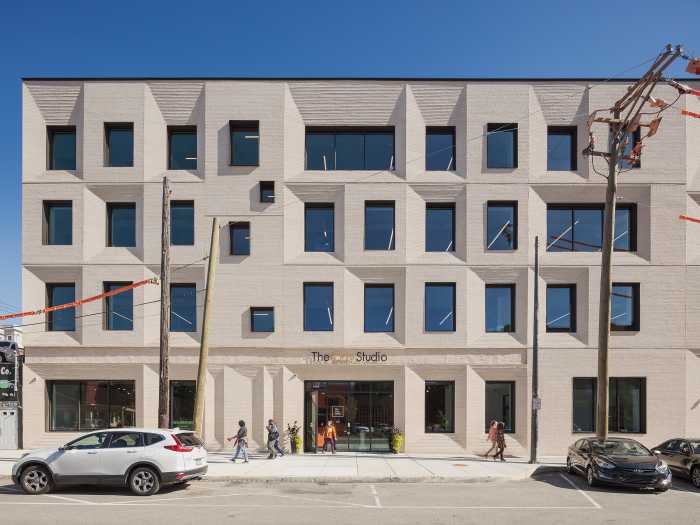
In Clay as Care, the material is being used to represent concepts from war, to slavery, to medical treatment, to mental health. Each of these artists has developed a deep connection with the material. They each talk about the power they feel when they touch clay, the agency that comes with shaping a material that comes from the earth to illustrate their inner lives, and then transformation of the clay when it is fired into ceramic, a material that will last on earth for many centuries beyond each of us. The fact that they all feel the power of clay as a metaphor for their humanity connects them and their artwork.
Clay as Care is described as an immersive exhibition. In what ways will visitors experience that aspect when they visit the gallery?
When the visitor enters the gallery, they will see all four works of art as well as a welcoming rest area in the center of the space. There, they will be able to view Maia Chao’s film, rest between looking at the other three artworks, or just spend time resting. There will be a place in the gallery for making with clay. We want visitors to experience the tactile quality of working with clay during their time. Our goal is for people to feel welcome to spend time, look at, and contemplate the art, rest, and feel some of the care we believe is inherent in clay as a material.
The studio is collaborating with researchers from Penn, Jefferson, and Drexel to study how visitors experience care in the gallery. What do you hope to learn through that research?
We’re thrilled to have UPenn Neuroaesthetics, Jefferson Art Therapy, and Drexel Art Psychotherapy Departments as part of our Advisory Council. They have been participating in our meetings for over a year and we have learned so much about each of their approaches to using clay and examining how people respond to viewing art in different environments. They are helping us develop a survey that we hope will allow us to assess if we successfully provide a welcoming and restful experience for the viewer. We plan to use all we have learned through this process in our future exhibitions as well to make sure they are as effective and relevant to our viewers as possible.
There will be a handful of events and programming tied to the exhibition, including a free Care Fest in November. What can visitors expect at these events?
One major event is the Symposium on Oct. 25 with our keynote speaker, Tricia Hersey. We’re thrilled she’s traveling to Philadelphia to speak at the event. Tricia is among the amazing people championing the idea that rest can be a radical act. She founded the Nap Ministry, has written books, and has spoken around the world about the idea that we all deserve to rest. Each of our artists and collaborators will also speak, and, of course, there will be a hands-on clay activity.
The Clay Studio will also launch Care Fest as a new program based on our annual Clay Fest. Visitors will experience eight different activities promoting wellness modalities based on using clay and ceramics, including guided meditation, a wellness-focused clay-making activity, and movement based around ceramics.
Ultimately, what do you hope people feel or take away after experiencing Clay as Care?
We want our visitors to experience the power of clay to communicate the artists’ path to healing through the artworks they created. At the same time, we want to offer the visitors their own time to rest, feel calm, and experience the healing qualities that working with clay can create.
The Clay Studio Center for Innovation in Ceramic Art is located at 1425 N. American Street in Kensington. More details about upcoming events and exhibitions can be found online at theclaystudio.org.
